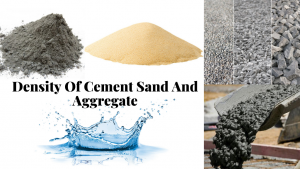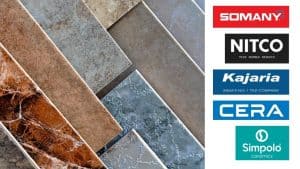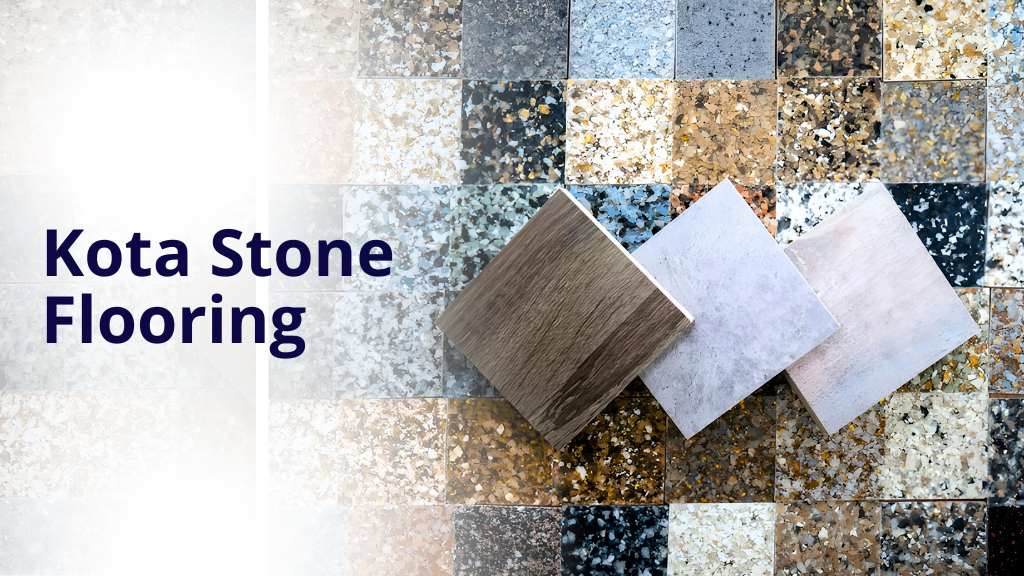
Kota Stone is a popular natural stone that has been used for centuries in various indoor and outdoor applications. It is known for its durability, natural beauty, and low maintenance requirements, making it a preferred choice for architects, interior designers, and homeowners.
All You Need to Know About Kota Stone Flooring for Your Next Project
It is used for flooring, wall cladding, staircase, patio, garden landscaping, and pool surroundings. In this article, we will delve deeper into the advantages and disadvantages of Kota Stone flooring, its uses, maintenance requirements, and pricing, to help you make an informed decision on whether it is the right choice for your next project.
Kota Stone: What is it?
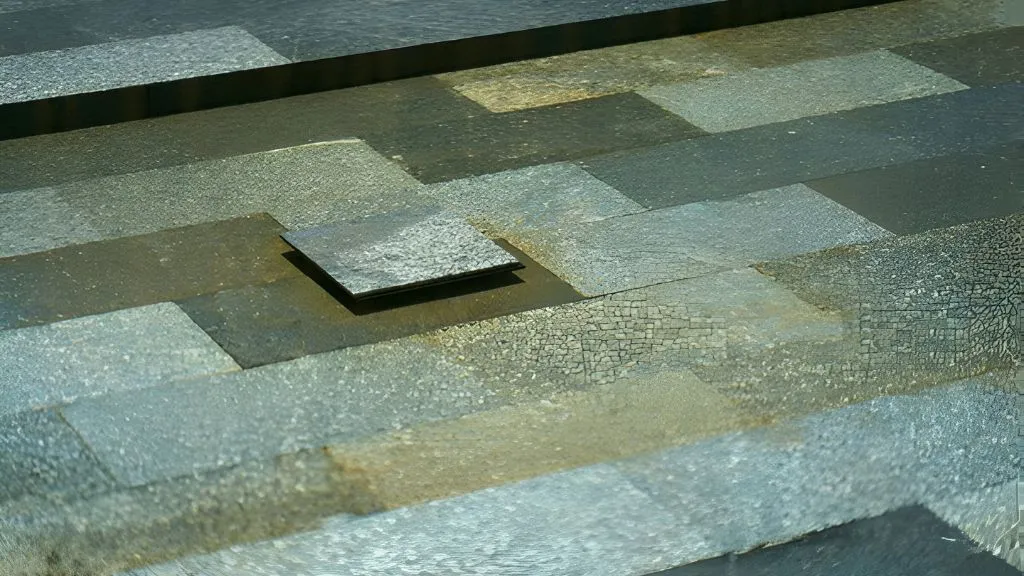
Kota Stone is a fine-grained variety of limestone that is found in Kota, a city in the northern Indian state of Rajasthan. It is a popular building and construction material due to its unique properties, such as durability, toughness, and non-slippery texture.
Kota Stone is available in a range of colors, including blue, green, black, and brown. It is commonly used for flooring, wall cladding, and roofing. In addition, it is also used for paving paths and garden walkways due to its non-slippery texture.
One of the unique features of Kota Stone is its ability to withstand extreme weather conditions, making it suitable for both indoor and outdoor applications. It is also resistant to scratches, stains, and heavy foot traffic.
Kota Stone is extracted from quarries in Kota, and it is processed and polished to give it a smooth finish. The stone is cut into different sizes and shapes to suit different applications.
In summary, Kota Stone is a type of limestone that is popularly used for its unique properties and suitability for a wide range of applications.
Advantages of Kota Stone Flooring
Kota Stone Flooring is a popular choice for homes, offices, and commercial spaces due to its many advantages, including:
- Durability: Kota stone is a very dense and hard-wearing material that can withstand heavy foot traffic and wear and tear. It is also resistant to damage from chemicals and acids, making it suitable for use in areas where spills and stains are likely.
- Low maintenance: Kota flooring design is very easy to maintain, requiring only regular sweeping and occasional mopping with a mild detergent solution. It does not require any special treatment or polishing to maintain its natural look and texture.
- Non-slippery: Kota flooring design has a natural, rough texture that provides a good grip and makes it ideal for use in areas prone to water spills and other hazards. This makes it a safer flooring option for homes and commercial spaces.
- Aesthetic appeal: Kota stone has a unique, earthy look that can add character and warmth to a space. It is available in a variety of colors, including blue, green, black, and brown, and can be cut and polished to various sizes and shapes to suit different design requirements.
- Eco-friendly: Kota stone is a natural material that is extracted from quarries in a sustainable manner, making it an environmentally friendly flooring option. It is also recyclable and can be reused in other construction projects.
- Cost-effective: Kota stone is an affordable flooring option compared to other natural stones like marble and granite, making it a popular choice for those on a budget. It is also easy to install, which can save on installation costs.
- Resistant to stains and scratches: Kota stone is highly resistant to stains and scratches, making it suitable for use in high-use areas like kitchens, dining areas, and hallways. It can also withstand heavy furniture and equipment without getting damaged.
Disadvantages of Kota Stone Flooring
Like any other flooring material, Kota Stone also has some disadvantages that you should consider before choosing it as a flooring option. Some of the disadvantages of Kota Stone Flooring are:
- Hardness: While Kota stone’s hardness makes it durable, it can also be a disadvantage for some people as it can be uncomfortable to walk or stand on for extended periods.
- Susceptibility to water damage: While Kota stone is non-slippery, it can be susceptible to water damage if not sealed properly. It is important to maintain a proper seal to avoid water damage.
- Difficult to install: Kota stone is a hard and heavy material, which can make it difficult to install. It requires specialized tools and equipment for installation, which can increase the installation cost.
- Rough texture: While the rough texture of Kota stone provides good grip and makes it non-slippery, it can also be a disadvantage for some people as it can be difficult to clean and maintain.
- Limited color options: Kota stone is available in a limited range of colors compared to other natural stones like marble and granite, which may not suit everyone’s design preferences.
- Limited availability: Kota stone is only available in certain regions of India, which can limit its availability and increase its transportation costs.
Where Can Kota Stone Be Used?
Kota Stone is a versatile natural stone that can be used in a variety of indoor and outdoor applications. Some common areas where Kota Stone can be used are:
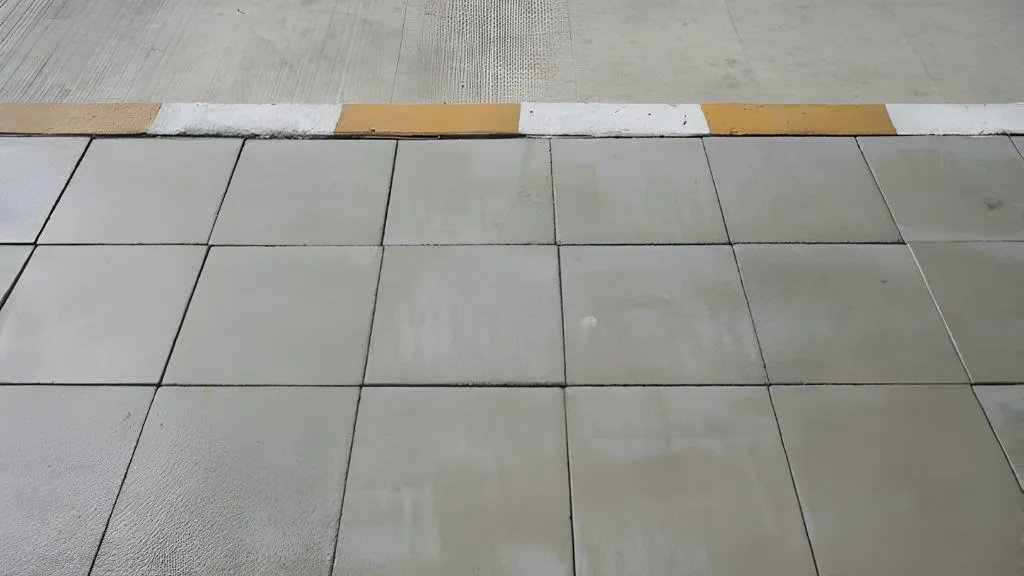
- Flooring: Kota stone flooring is a popular option for homes, offices, and commercial spaces due to its durability, non-slippery texture, and low maintenance requirements.
- Wall Cladding: Kota Stone can be used as wall cladding to add a natural and earthy look to a space. It is commonly used in bathrooms, kitchens, and living areas.
- Staircase: Kota Stone can be used for staircase treads and risers due to its durability and slip-resistant properties.
- Patio and Walkways: Kota stone can be used to create attractive and durable outdoor walkways, patios, and pathways. Its natural texture provides good grip and makes it suitable for outdoor areas prone to water spills.
- Garden Landscaping: Kota stone can be used to create natural-looking garden pathways, garden walls, and garden benches.
- Pool Surroundings: Kota stone is a popular option for pool decks and surrounding areas due to its slip-resistant texture and ability to withstand exposure to water and pool chemicals.
Kota Stone Vs. Granite: Which One Is Better?
Let’s see which one is better for you in the Kota Stone Vs. Granite comparison.
|
Criteria |
Kota Stone |
Granite |
|
Appearance |
Natural earthy tones with small fossil imprints |
Wide variety of colors and patterns |
|
Durability |
Moderately durable, susceptible to scratches and chipping |
Very durable, resistant to scratches and chipping |
|
Maintenance |
Requires regular polishing and sealing to maintain shine and prevent staining |
Requires minimal maintenance, occasional resealing |
|
Cost |
Less expensive than granite |
More expensive than Kota Stone |
|
Usage |
Suitable for interior and exterior flooring, wall cladding and landscaping |
Suitable for interior and exterior flooring, countertops, and wall cladding |
|
Availability |
Available in North and Western India |
Available in many countries around the world |
|
Sustainability |
Environmentally friendly, sourced from local quarries |
May have a higher carbon footprint due to transportation and processing |
Kota Stone Price
The price of Kota Stone can vary depending on various factors such as the quality of the stone, size, thickness, color, and location. Kota Stone is typically sold in square feet, and the price can range from Rs. 25 to Rs. 150 per square foot, or more, depending on the factors mentioned above.
The size of the Kota Stone can also affect its price. Larger stones may cost more due to their rarity and difficulty in extraction and transportation. Similarly, stones with a uniform thickness and consistent color can be more expensive compared to irregular or inconsistent stones.
The location of the Kota Stone quarry can also affect its price, as transportation costs can add to the final price. Kota Stone from the Kota district of Rajasthan, India, where most of the quarries are located, is usually less expensive compared to Kota Stone from other regions.
Final Thoughts
Kota Stone is a popular flooring option that offers many advantages, including durability, low maintenance, natural appearance, slip resistance, and cost-effectiveness. However, as with any flooring material, there are also some disadvantages to consider, such as its uneven surface, porous nature, limited variety, cold surface, and susceptibility to scratches and chips. Despite these drawbacks, Kota Stone remains a versatile and practical option for both residential and commercial buildings. With proper installation, maintenance, and care, Kota Stone flooring can add a touch of natural beauty and elegance to any space.


